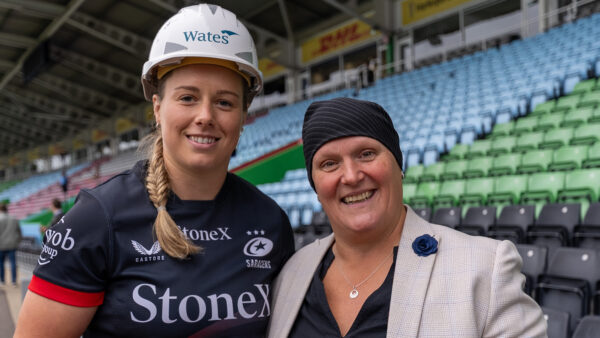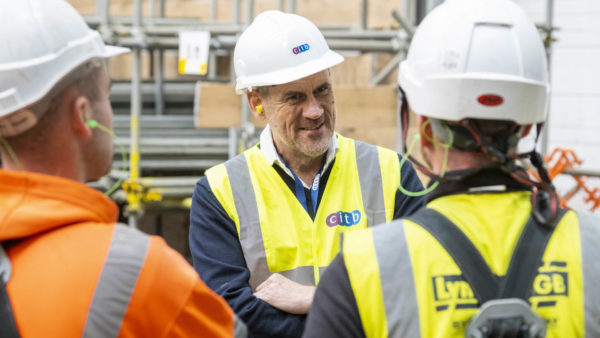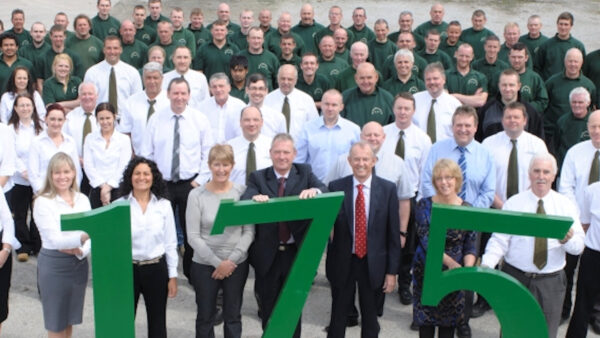
Practical steps for SME construction leaders who want to build resilient teams.
1. The leadership pinch
While materials have stabilised, bank rates, professional indemnity insurance and obligations under the Building Safety Act still squeeze cash. Yet the deeper risk is human: many mid-market firms rely on a founder who is estimator, commercial lead and HR manager rolled into one.
The Chartered Institute of Building (CIOB) warns that command-and-control habits inherited from an older era of “foreman culture” clash with a workforce now demanding collaboration, flexibility and wellbeing support.
Add a mental health burden that the CIOB calls a “silent crisis” and it’s clear that unless owners evolve from boss to people leader, good staff will walk – often straight to tier ones or tech-savvy competitors.
Take-away: projects thrive when leadership capacity grows faster than workload.
2. What modern construction leadership looks like
My Mastermind Model translates lofty culture talk into three daily disciplines:
Discipline | What it looks like on site |
Vision clarity | Every operative can describe the project goal and the company’s ‘why’ in less than a minute. |
Accountability rhythm | Weekly scorecards for site managers and quantity surveyors, so that issues such as safety snags, cost drift and labour gaps surface early. |
Capability pipeline | Structured CPD, mentoring and stretch assignments that turn great tradespeople into future project managers. |
This isn’t about motivational posters, it’s about installing the same rigour for people that we already accept for programme and cost.
3. Play to your home-turf advantage
Leadership starts with context. Gather the senior team and answer three blunt questions:
- Which project type have we delivered at least five times without drama?
- Which client role values that reliability – bursar, estates manager, regional developer?
- Which pain point keeps that role awake – programme certainty, compliance risk, community goodwill?
One Midlands firm realised its sweet spot was refurbishing occupied primary schools during the six-week summer break.
They reshaped toolbox talks, supply-chain briefings and site signage around that scenario. Bid hit-rates jumped from 30% to 55% inside a year – proof that clear focus energises both staff and prospects.
Take-away: become the obvious safest pair of hands for one recurring problem, and talent will rally behind the mission.
4. Grow leaders from the inside out
Buying ready-made managers on the open market costs time and brand-name salaries. Growing them internally is slower at first but cheaper and aids retention in the long term.
Practical moves:
- Buddy system – pair apprentices with senior trades leads; rotate quarterly so knowledge spreads.
- Site-lead shadowing – one day a month a supervisor sits in the project manager’s cost-review meeting to learn commercial language.
- CIOB Tomorrow’s Leaders – enrol ambitious staff in the community; they gain external mentors and CPD points.
- Quarterly leadership labs – half-day workshops on conflict resolution, inclusive language and mental health first aid.
Document lessons in a shared ‘playbook’ on Teams so knowledge survives turnover.
5. Put wellbeing on the profit and loss statement
CIOB research shows that despite more support services, construction workers still report high stress levels.
Treat wellbeing as a project risk:
- Add a wellbeing line to every risk register; review it in the weekly look-ahead.
- Train two mental health first-aiders per site – roughly £300 each, which is priceless in a crisis.
- Schedule ‘micro-breaks’ (half-day Fridays after handover) to curb fatigue-related mistakes.
Take-away: leaders who normalise these checks show that people, not just the programme, matter.
6. Lead the money – don’t let money lead you
Great culture collapses when cash is tight, so margin discipline is a leadership duty.
I typically set two financial guardrails – 25%+ gross profit on every job and 15% net after overheads and owner salary:
- Cost floor – if gross drops below 25%, remove scope, never slash margin.
- Valuation schedule – link payments to certified valuations; funds flow into a project bank account ring-fenced for suppliers.
- Profit-share pool – allocate 5% of net profit to quarterly team bonuses tied to safety scores and programme predictability.
Take-away: when staff see that smart delivery drives both job security and reward, discretionary effort follows.
7. A 90-day leadership sprint
Focus each week | Tangible output |
Week 1-2: Staff pulse survey | Identify biggest blockers to great work. |
Week 3-4: Vision sheet | One-page ‘why we exist’ brief shared at toolbox talks. |
Week 5-6: KPI scoreboard | Live dashboard: health and safety observations, snag closure, margin versus forecast. |
Week 7-8: Talent lift | Enrol two supervisors in CIOB Tomorrow’s Leaders and assign mentors. |
Week 9-10: Wellbeing net | Train mental health first-aiders; schedule monthly check-ins. |
Week 11-12: Leadership lab | Workshop: Running a productive progress meeting in 20 minutes. |
Repeat the sprint each quarter, layering new skills and tightening the culture.
8. The pay-off
CIOB award data proves that size is no barrier to excellence – SME leaders routinely lift Construction Manager of the Yeartrophies when leadership clicks.
The firms that do so aren’t necessarily richer; they are clearer on purpose, stricter on process, and braver about developing their people.
Projects don’t succeed because the Gantt chart was perfect. They succeed because everyone on site understands the goal, feels safe to speak up, and has the skills to act fast.
Adopt that mindset, protect your margins, and invest in your future leaders. The next hire – and perhaps the next award judge – will notice.
Greg Wilkes is founder of Develop Coaching and creator of the Mastermind Model for construction SMEs.









